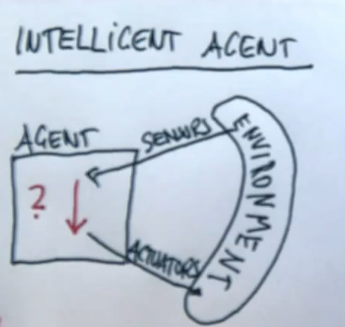AI : Introduction

The above cycle is known as perception action cycle
Basic Terminology
Fully vs Partially Observable environment
| Fully Observable Environment | Partially Observable Environment |
|---|---|
| Fully observable environment is one in which the agent can always see the entire state of environment | Partially observable environment is one in which the agent can never see the entire state of environment |
| In case of fully observable environments all relevant portions of the environment are observable | In case of partially observable environments not all relevant portions of the environment are observable |
| Fully observable environment not need memory to make an optimal decision | Partially observable environment need memory to make an optimal decision |
| Ex: Checker Game, Chess | Ex: Card games where it requires previous state info |
Deterministic vs Stochastic environment
| Deterministic Environment | Stochastic Environment |
|---|---|
| In a deterministic environment, any action that is taken uniquely determines its outcome | In a stochastic environment, there is always some level of randomness |
| Ex: Chess, There is no uncertainty | Ex: Dice |
Discrete vs Continues environment
| Discrete Environment | Continues Environment |
|---|---|
| Discrete AI environments are those on which a finite set of possibilities can drive the final outcome of the task | Continuous AI environments rely on unknown and rapidly changing data sources |
| Chess is also classified as a discrete AI problem | Vision systems in drones or self-driving cars operate on continuous AI environments |
Benign vs Adversarial environment
| Benign Environment | Adversarial Environment |
|---|---|
| The environment has no objective that would "go against" what you're trying to accomplish | Environment will oppose what you're trying to do |
| Ex: weather | Ex: Competitive Games |
AI and Uncertainty
AI as a technique of uncertainty management in computer software
Reasons of uncertainty can be
- Sensor limit
- Adversaries
- Stochastic
- Laziness
- Ignorance